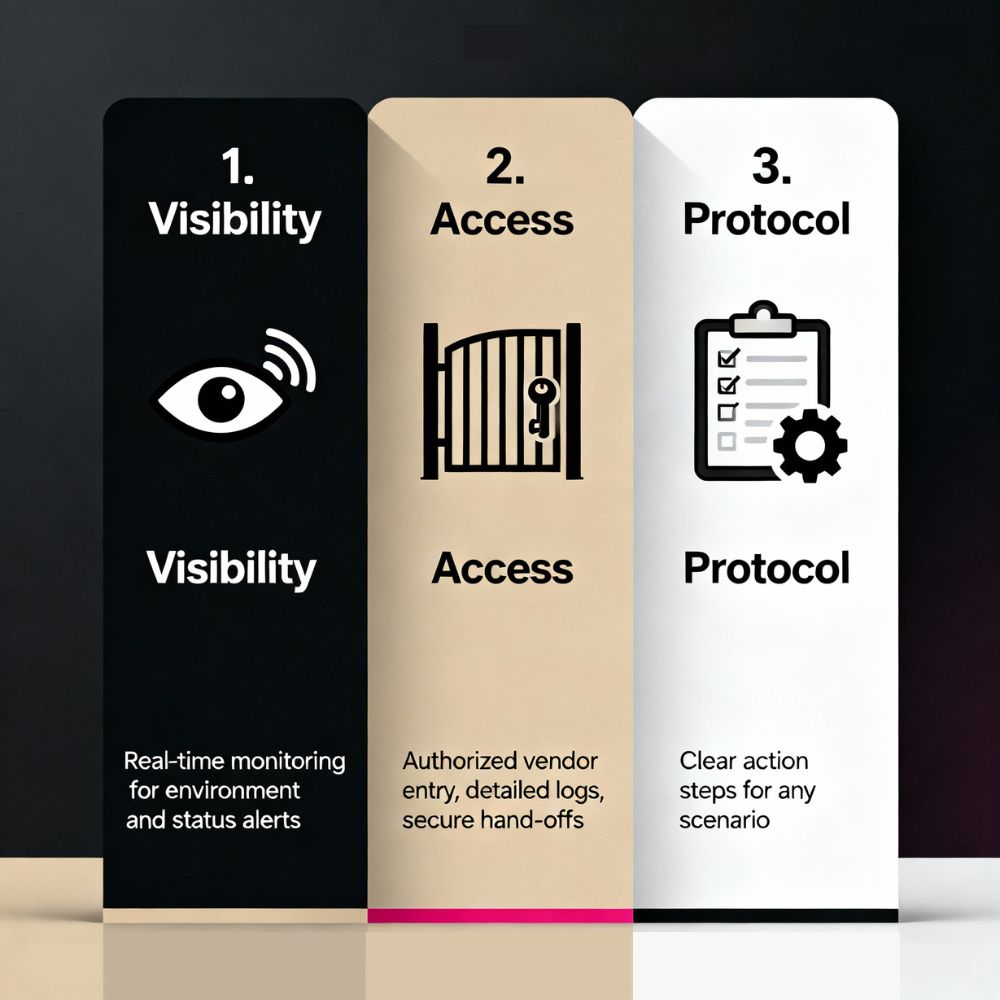A snowbird’s guide to seasonal car storage in Florida.
Ensure your car is ready the moment you return. A snowbird’s guide to seasonal car storage in Florida with simple systems for monitoring, vendor access, and maintenance, so every first drive feels like a celebration.

Imagine arriving in Florida after months away, looking forward to that first drive in your cherished car. Yet instead of excitement, you're met with the frustration of a dead battery or worn interior; issues all too common when seasonal car storage falls short. Choosing the right solution is about more than just finding a place to park; it's about ensuring your vehicle is protected, maintained, and always ready to enjoy from the moment you return.
This article outlines why seasonal car storage needs a system and how to set one up so cars remain ready, reliable, and enjoyable the moment you return.
Why Seasonal Car Storage Needs a System
Cars dislike inactivity. Batteries sulfate, seals set, and fuel ages. The result is a vehicle that looks fine but feels reluctant which can mean hard starts, warning lights, and a general loss of refinement that undermines both enjoyment and value.
Because these changes are incremental, they’re easy to ignore. But small issues can compound to big headaches, which not only erode your enjoyment but also the value of your collection. A simple remote-care framework can prevent that spiral.
The Three Pillars of Remote Stewardship
Remote peace of mind isn’t created by a single camera or a friendly check-in. It comes from a blended approach: visibility, controlled access, and clear protocol.

- Visibility: Live eyes on the bay, plus readouts for temperature, humidity, and tender status. Alerts should flag out-of-range conditions or power interruption.
- Access: Pre-authorized vendors (detailing, maintenance, transport) with logged entry, time windows, and documented hand-offs.
- Protocol: Written steps for common scenarios such as humidity spikes, storm aftermath, tender failures so the right actions happen without delay or guesswork.
Owners who travel frequently benefit from storage partners who can act as competent “eyes and hands,” with documented actions and accountability so nothing important is missed.
Preparing Cars for the Off-Season
As a car collector, a few hours of focused prep in these areas can save weeks of frustration later.
- Decontamination & Protection: Thorough wash, paint protection refresh, interior treatment, and glass care reduce the impact of dust and time.
- Fuel & Fluids: Stabilized fuel and a documented plan for periodic heat-cycles prevent varnish and keep seals conditioned.
- Battery & Tires: Quality tenders on clean circuits; tire cradles or a rotation schedule to avoid flat-spotting.
- Covers & Documentation: Breathable covers only; baseline photos of exterior, wheels, bay, and underhood for easy comparison on return.
Download our handy Pre-departure Checklist

Transport and Handoffs
Closed transport protects finishes and interiors. Schedule your pickup and delivery to align with storage access windows; confirm pre- and post-transport photos and note any changes. For multi-car collections, stagger moves to avoid rushed inspections.
Insurance and Peace of Mind
Review coverage for stored vehicles, including any requirements for climate control or security measures. If vendors will drive or service cars while you’re away, confirm their coverage and your own. Keep proof of storage conditions and maintenance; it supports both claims and resale narratives.
A Practical Timeline for Seasonal Car Storage
- Two Weeks Before Departure: Complete decontamination, set tire and tender plan, and confirm transport if needed.
- During Absence: Monthly heat-cycle or exercise per plan, documented with a short report.
- Before Return: Quick inspection and wash so your first drive feels like a continuation, not a recovery.
How to Set Up Remote Car Care That Works
- Prepare before departure.
Decontamination wash, paint protection refresh, interior care, stabilized fuel, breathable cover, and a clear tender/tire plan. Take dated baseline photos of critical areas. - Install a simple monitoring stack.
Cameras for view, sensors for temperature/humidity and door status, and smart tender monitoring where available. Route alerts to someone who can act. - Establish an exercise cadence.
Light monthly heat-cycles or brief exercise runs protect systems. Have the action, route, or idle procedure written down and acknowledged. - Define vendor access and hand-offs.
Pre-approve trusted providers. Require arrival/departure logs and a few photos documenting what was done. - Plan for storms and power events.
Set threshold alerts and a checklist for post-event checks (visual walk-around, tender verification, humidity reading) with a quick photo summary. - Maintain a simple log.
Date, action taken, observations. It’s the best early-warning system for patterns you can’t see from a distance. - Schedule an arrival prep.
The week before you return, request a quick wash, interior freshen-up, and a brief systems check so your first drive feels like a continuation, not a recovery. - Choose storage designed for stewardship.
Look for humidity-managed bays, clean power, layered security, and formal vendor policies. A team comfortable with documentation and remote check-ins makes the difference between “stored” and “cared for.”
If you need a Florida base that supports remote stewardship with climate control, vendor access, and documented check-ins, a purpose-built car condo community like LDG can make seasonal ownership feel seamless.
Our approach is designed for discerning car enthusiasts and collectors who expect their vehicle to be ready for enjoyment as soon as they arrive, not those simply seeking the cheapest parking solution. If you value turn-key care, documented stewardship, and complete peace of mind, you’re in the right place.
Don’t leave your prized car’s condition to chance. Reach out now and see how Luxe Dream Garage sets the gold standard for seasonal car care, so every return feels like a celebration, not a repair job.


